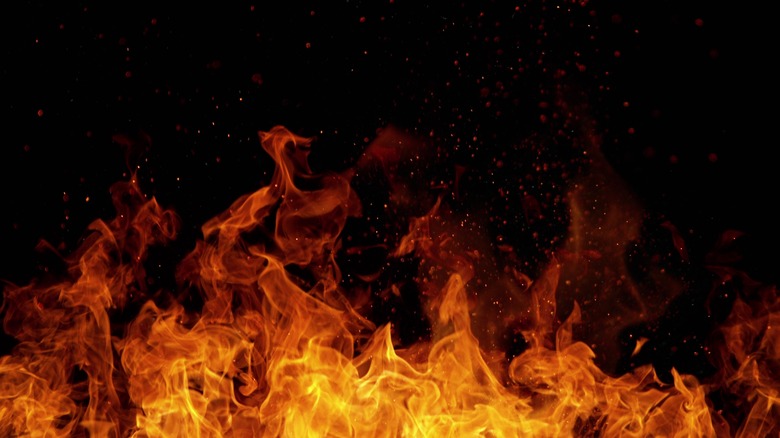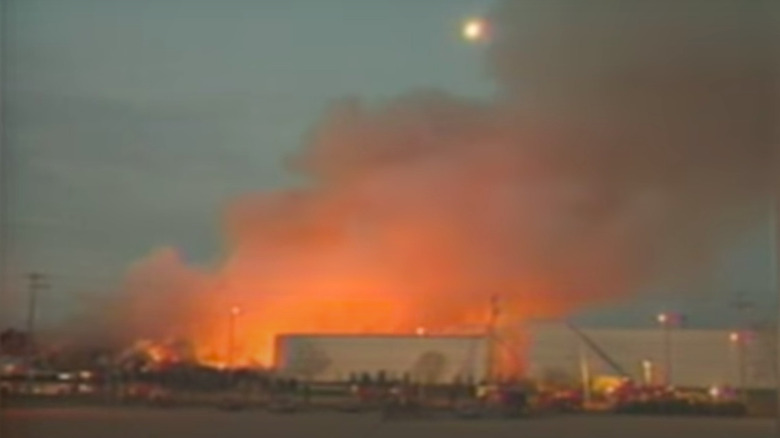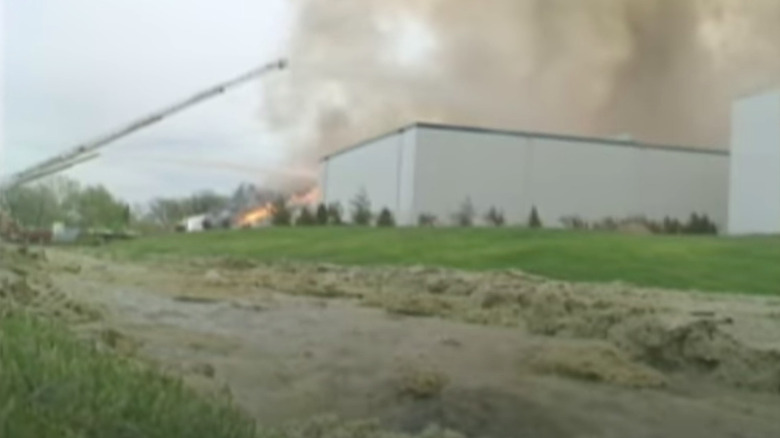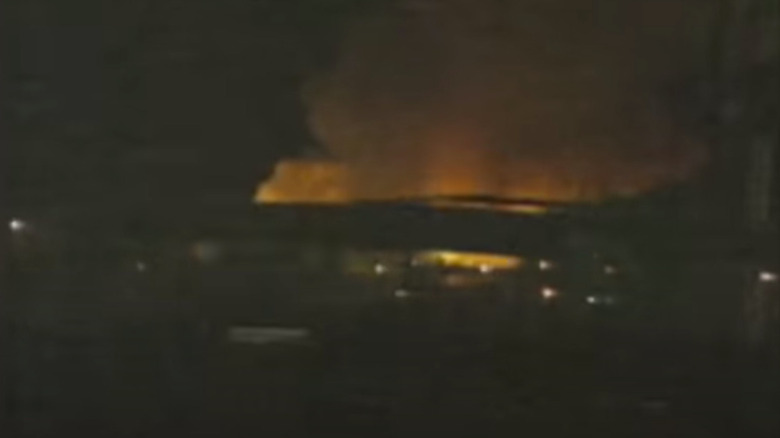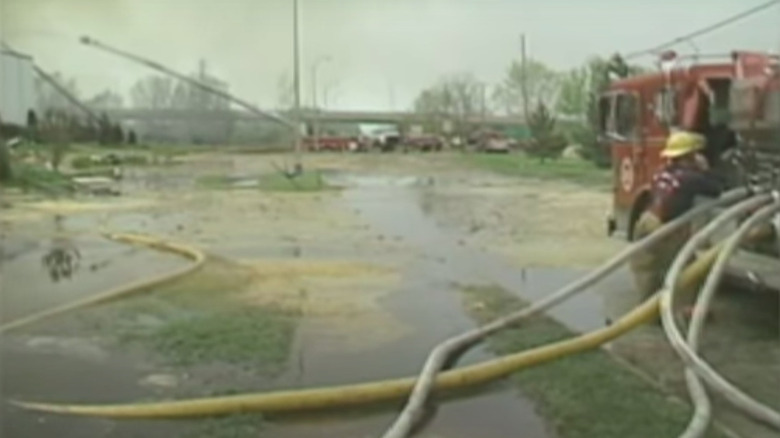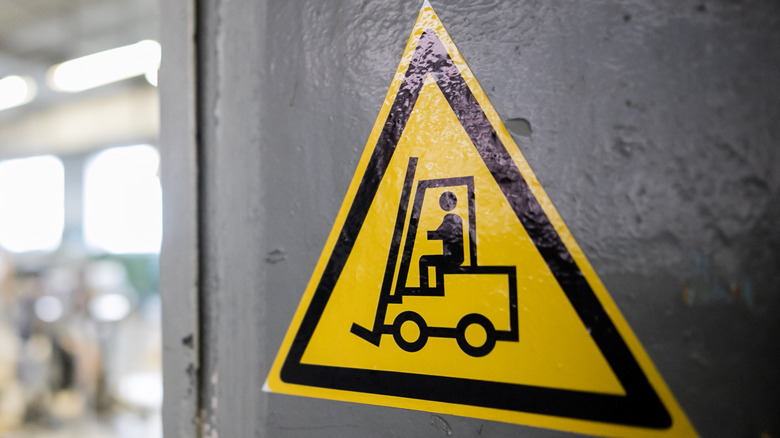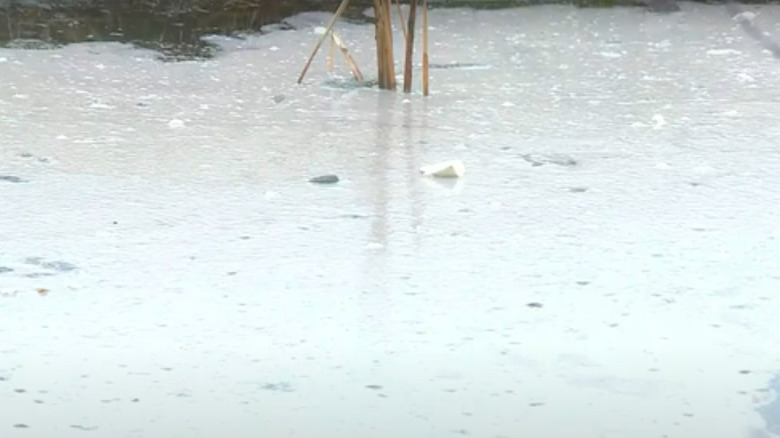The Butter River Fire: Wisconsin's Dairy Disaster
When it comes to floods of food, some people have heard of the London Beer Flood of 1814, the Great Gorbals Whiskey Flood of 1906, or the Great Molasses Flood of 1919. The Butter River Fire of 1991 is likely less well-known because it luckily didn't cause any fatalities, but a river of millions of pounds of melted butter is still nothing to be scoffed at. And apparently, it seems to happen in Wisconsin more often than not.
Although petroleum oil spills are the oil spills that come to mind most readily, spills involving vegetable oils or animal fats have similarly disastrous effects on the environment, according to the EPA. And although local firefighters and engineers tried to keep the butter river contained from becoming a gigantic oil spill, they were also racing against the clock before the butter solidified. Not to mention the roaring fire that was feeding the river of butter.
The largest fire in Madison's history
It all started with an unmanned forklift in a warehouse aisle in the Central Storage & Warehouse Co. in Madison, Wisconsin. On May 3, 1991, the forklift was waiting for warranty repairs when all of sudden, it started operating on its own around 3:00 p.m. The forklift battery shorted out, and the hydraulic lines burst, causing flammable liquid to spray everywhere. With the liquid spraying all over hot machine parts and onto food in the warehouse, the flames erupted in a matter of seconds, writes the Wisconsin State Journal.
The refrigerated warehouse stored food ready for market from local businesses, food corporations, and even the federal government. The majority of the food was dairy- and oil-rich and included over 10 million pounds of surplus butter stored by the federal government. So as the flames engulfed the entire building within minutes, all the oil-rich food turned the fire into a grease inferno that firefighters struggled to put out with their water hoses.
When firefighters first arrived on the scene, there was so much smoke that they didn't even realize that it was millions of pounds of lard, cheese, and butter burning until the next day, News 3 Now reports. And according to the Madison Fire Department, because the inside of the warehouse was a maze of refrigerators that were kept cool using highly flammable materials, firefighters were unable to reach the fire before it started engulfing numerous warehouse buildings.
Millions of pounds of melted butter
By the following day, the walls of the warehouse collapsed due to the ongoing fire, and a wave of melted butter came pouring out of the building. Madison Fire Department Chief Steven Davis, who saw the walls collapse, said (via Wisconsin State Farmer), "It literally was a river of butter." Before long, all the firefighters and their equipment were surrounded by a river of sludgey melted dairy products that was 5 feet deep in some areas. Davis also recalled that after trudging through the river of butter, "I had butter in places a guy shouldn't have butter by the end of that night," per Tone Madison.
The river of butter flowed into the streets, and many were worried that the butter river would reach Starkweather Creek and spill into Lake Monona. According to the EPA, engineers were brought in to dig a channel to redirect the flow of butter, and over 168,000 pounds of sand were used to try to soak up the flow of the butter river. Luckily, the efforts of the firefighters and engineers managed to keep the butter river from reaching natural waterways, and the majority of the butter was effectively redirected under a highway overpass where there were storm drains.
Burning for days
The fire continued to burn for days. And by midnight of the first day, around 3,000 people had to be evacuated because the fire was getting dangerously close to tanks of anhydrous ammonia (per UPI), which may not always be explosive but can release toxic fumes, per Firehouse. The U.S. Highway 51 was also closed briefly due to its proximity to the fire. Vicki Meseberg, who was driving on the highway before it was closed down, recalled to UPI, "The flames were so high, the smoke was very, very black. I was on the highway and could feel the heat from my car."
NBC15 reports that it took until May 5 for the fire to be considered under control, but it wouldn't be completely put out until May 11, over a week after the fire first started to blaze. Wisconsin State Farmer writes that one of the biggest difficulties in putting out the fire was the moat of dairy around the collapsed warehouse that prevented the fire trucks from getting out and being able to refuel.
Luckily, there were no fatalities in either the fire or the butter river. One person who worked in the warehouse suffered from minor burns as the warehouse workers evacuated the building, and three firefighters needed to be treated for minor injuries and exhaustion from fighting the fire. As of January 2023, the Butter Fire remains the largest fire Madison, Wisconsin has ever experienced.
Weeks of clean up
As the river of butter was kept from going into the urban waterways, firefighters shifted their attention to how they were going to actually clean up the millions of pounds of butter that were going to start cooling and solidifying. As the river of butter was contained, the Madison Metropolitan Sewage District writes that it was decided to pump the butter river into the sanitary sewer system.
Melted butter was flushed into the sewage system, and although rains threatened to cause another butter flood, additional dikes kept the river of butter contained. And while firefighters worked to put out the fire, sewage treatment workers managed to handle the almost 15 million pounds of butter water that was flushed through the sewage system. According to Wisconsin State Farmer, some of the butter ended up congealing on the surface, but the U.S. Department of Agriculture contracted people to salvage the butter for animal feed, which they sold for $43,000. In the end, it took nearly two weeks to clean up the majority of the melted butter and remaining food products and cost roughly $550,000.
In total, the EPA reports that about 50 million pounds of food products — including hams and hot dogs burned up in the fire — and almost 16 million pounds of butter made up the butter river that flowed through the streets of Madison. The fire also caused the release of 1,000 pounds of anhydrous ammonia.
Who was to blame?
The Butter River Fire of 1991 caused a considerable amount of damage. According to the Wisconsin State Farmer, it's estimated that roughly $70 million worth of food products were destroyed, and there was $7.5 million worth of property damages. In addition, the Madison Fire Department was forced to get all new firefighting gear because almost everything that they'd used fighting in the butter river had been ruined. Some equipment was salvaged and cleaned, but Madison Fire Department Chief Steven Davis notes that it resulted in the fire station having a rotten smell for years.
According to the Wisconsin State Journal, the Central Storage & Warehouse Co. subsequently sued the Crown Equipment Corp. of Ohio, which was responsible for manufacturing the forklift that started the fire. Ken Williams, owner of Central Storage & Warehouse Co., notes that the forklift previously had issues and "it had a history at times of operating by itself. The lifts would go up, and it was a large thing." The federal government also sued Crown Equipment Corp., and in both cases, Crown was found guilty of negligence.
Another river of butter
This may have been the worst river of melted butter that the state of Wisconsin has ever seen, but it wasn't the last. On January 2, 2023, a fire at the Associated Milk Producers Inc. in Portage, Wisconsin, created another river of melted butter. Luckily, NBC15 reports that there were no injuries due to the fire, and firefighters managed to extinguish the blaze by the night of January 3.
However, the Wisconsin State Farmer reports that this time, firefighters were unable to keep the melted butter out of the urban waterways, and the river of butter spilled into the Portage Canal. Although 99% of the melted butter was contained, a patch of melted butter roughly 30 by 20 feet wide ended up in the Portage Canal. And spills involving animal fats have detrimental effects on the environment similar to those of petroleum oil spills, which is why it's imperative for the butter spill to be cleaned up as quickly and as thoroughly as possible.
